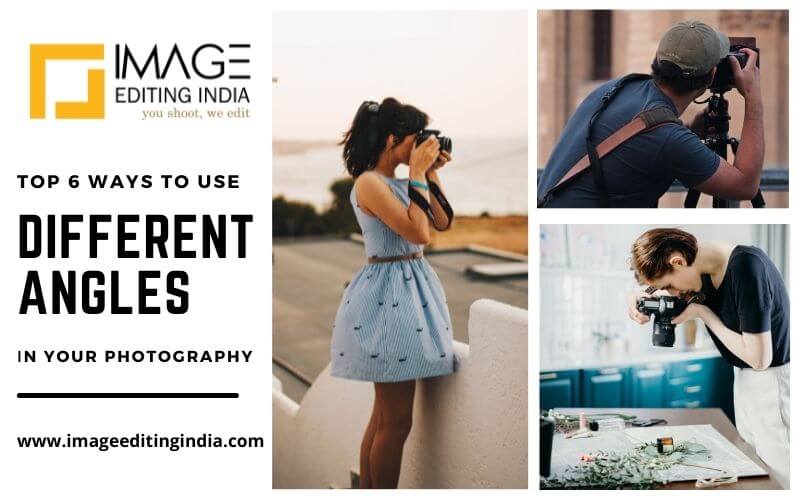
Top 6 Ways to Use Different Angles in Your Photography to Add Interest
Have you ever wondered, upon seeing a photo, how great that photo looks from that angle? Well, yes, the angle adds a different perspective to a particular photo adding interest and variety to that. In fact, a simple photo can look great and enticing when you show it from a different perspective and angle that triggers emotions from people seeing that. Not only that, but using different angles in the photography also works wonder to give a specific meaning to your capture and people can connect with that immensely.
Adding angles also work to evoke people’s feelings. This creative use of the camera is something that is a pro thing, and one that every budding photographer looks to add to their skill and imagination.
When you are starting out as a photographer, you would want to inculcate this in your skill and imagination as to how to add different angles and perspectives to your photography. Adding angles to your photography isn’t something that comes with what type of camera and lens you are using, but it’s all about you see the different aspects around the capture surrounding, you well you want the end picture to come out, and it all can be done by examining and assessing the capture from different angles, taking into other factors as well like light, reflection, surrounding elements and more.
So, what different angles you can add and try for your next photography project? We list down below:1. Eye-Level Angle
Also termed as face-to-face, in this perspective you capture the subject at the eye level. It is a highly engaging angle or perspective and must be approached from the right distance and ensuring that you are able to create a direct connection with the person you are capturing in your photo. Eye-level photos look great when you remove all the other aspects around and the focus is all on the subject. Such a photography angle is great for capturing portraits.
2. Bird’s Eye View
Also known as the high camera angle, bird’s eye view has become a highly favourite and tried out camera angle for many in today’s times, not just pros but also photography enthusiasts. You get up, go above the scene, look down straight into the subject and capture the photo. In this way, you capture all the details around. What makes this perspective a great one is that such views are unusual for any person on a daily basis or normal routine, thereby making such images more interesting.
3. Low Angle
This is where you go down, below the eye level and then take the capture. What this angle does is make the subject appear larger, adding a larger-than-life feeling to the captures. Such a perspective is great when you want to make the subject look bigger, tougher, scary, or even epic in a sense.
4. High Angle
A high angle is between the eye level and bird’s eye view. You go a bit higher, but not above so as to look straight down on the subject (in case of bird’s eye view). This angle works well when you are capturing a person or a thing. Think of being a parent looking down on your kid and then capturing them. This angle is just like that perspective. While in usual life, you go through this a lot, capturing the stills turn to be highly interesting and exciting, ideal for when you want to dominate the subject or make it look smaller on purpose.
5. Worm’s Eye View
Also known as bug’s eye view, herein you go below and lower to the ‘low angle’ perspective, and then look straight up the subject. An unusual angle and tried out not so frequently, this can be a great addition to a photograph, lending it an altogether different perspective and interest.
6. Dutch Angle or Tilted Angle
This is an unconventional perspective that works wonders to make the images look edgy. Usually, photos are in a straight line. However, with this angle, you make your photos different out of the ordinary. This angle is something that can be said to borne out of the cinema, as it makes the photo away from the comfort as they look unstable (a videography/cinematography aspect you would have noticed in horror movies). But it doesn’t mean that your tilted angle will result in scary captures. You can use the Dutch angle in a way that adds motion illusion and make the photos look daring and adventurous and exciting, all at the same time.
Apart from the above-mentioned angles, you can go a step above and try multiple angles in a single scene, thus rendering different textures, meaning,s and viewpoints to a single subject at the same time.
When you know about these angles, you should start experimenting with them. It will take time for you to adjust to these and become a pro, but with time and dedication, there is nothing that you can’t achieve. After all, try If you still feel that it needs some professional touch? you can contact any photo editing services provider, they will help you to provide better output after all your efforts.
